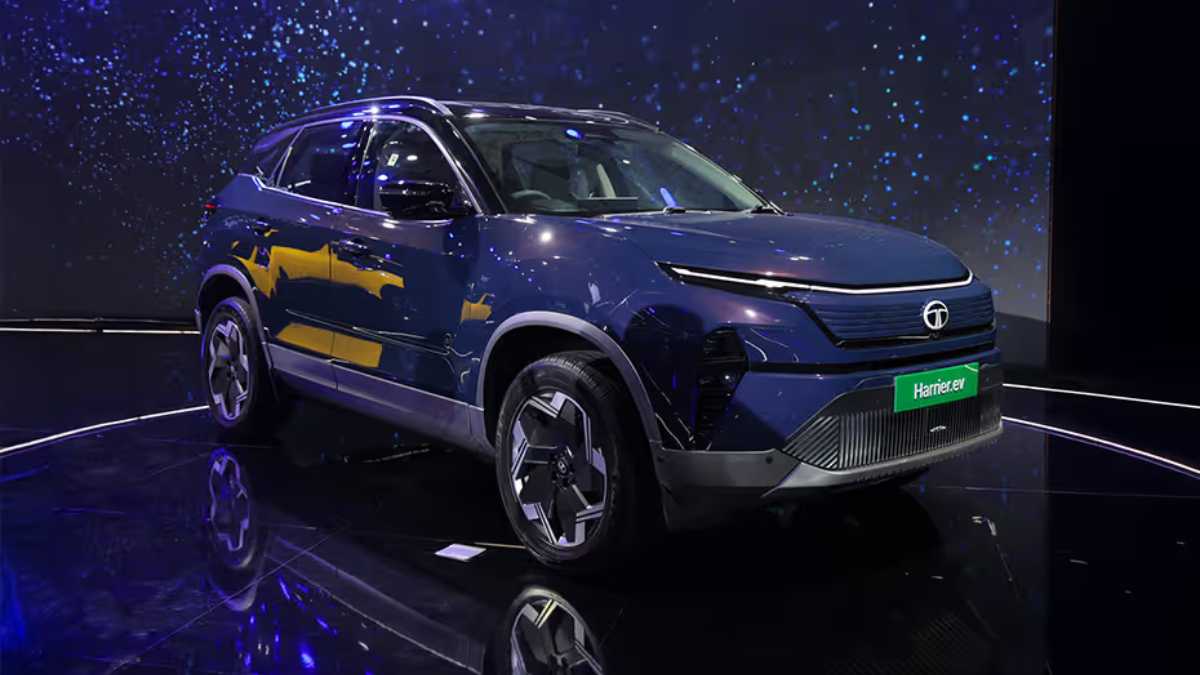Tata Motors has taken a bold leap forward in the EV space with the launch of the much-awaited Harrier EV — a smart blend of rugged performance, modern design, and next-generation technology. Unveiled recently at the Bharat Mobility Global Expo 2025, the Harrier EV promises not just sustainable mobility, but also a thrilling driving experience for those who love to explore uncharted paths.
Designed for All Terrains: Electric Power Meets Off-Road Soul
Built for versatility, the Harrier EV boasts an all-wheel-drive system powered by dual motors, making it suitable for challenging terrains. Tata has introduced a range of drive modes such as Mud, Sand, Rock, Snow/Grass, and even a Boost Mode for extra power when needed.
Off-road support features like transparent mode, off-road cruise assist, and a full-surround 360° camera enhance the vehicle’s trail-readiness. With approach and departure angles of 25.3° and 26.4° respectively, and a breakover angle of 16.6°, the Harrier EV can confidently take on steep and uneven paths.

Real-World Ready: Massive Range and Fast Charging
At the heart of the Harrier EV lies a robust battery pack, offering up to 627 kilometers (MIDC) on a single charge. Real-world driving is expected to deliver between 480 to 505 kilometers. In terms of practicality, the SUV supports ultra-fast charging, delivering 250 km of range in just 15 minutes and charging from 20% to 80% in around 25 minutes via a 120 kW DC charger.
Also Read:- Tata’s Next Big Launch? 4 New SUVs That Will Change Everything!
Power Options and Quick Launch Capability
Customers can choose between 65 kWh and 75 kWh battery variants, with drivetrain options ranging from rear-wheel to all-wheel drive. Acceleration is impressive — 0 to 100 km/h in just 6.3 seconds — thanks to the combined output of 504 Nm torque and up to 235 bhp in boost mode.
The EV can also power other devices or even another vehicle with Vehicle-to-Load (V2L) and Vehicle-to-Vehicle (V2V) functionalities, a handy feature for emergencies or outdoor trips.
Also Read:- Kia EV9 2026 Stuns With 491 Km Range & Sleek New Look!
First-in-India Features and Next-Level Cabin Experience
Inside the Harrier EV, you’ll find a 14.5-inch QLED touchscreen infotainment system — the first of its kind in any vehicle globally. It supports wireless Apple CarPlay and Android Auto, and gives access to over 25 built-in apps.
Additional standout features include:
- India’s first 540-degree camera view
- Level 2 ADAS from Intel Mobileye
- Auto-parking with summon feature, tuned by Continental
- Dolby Atmos surround sound for immersive audio
The digital driver display also includes EV-specific graphics, offering real-time feedback on driving style and efficiency.
Also Read:- Kia’s EV Plans Unveiled: Two New Models Targeting India’s Growing Electric Market!
Engineered in India, Built for the World
The Harrier EV rides on Tata’s Acti.ev+ platform, a refined evolution of the OMEGA Arc architecture optimized for electric performance. The battery and motor systems are the result of close collaboration with Octillion, Tata AutoComp, and Schaeffler, and have been locally developed to ensure cost-efficiency and high quality.
Charging is made flexible with a 7.2 kW home charger and a 3.3 kW portable charger, making it easy to plug in whether you’re at home or on the move.

Launch Price and What Lies Ahead
With a starting price of ₹21.49 lakh (ex-showroom), the Harrier EV enters the premium electric SUV segment with strong value. Tata has confirmed that pre-bookings will officially start on July 2, 2025. A standout offer is the lifetime battery warranty, ensuring peace of mind for buyers over the long haul.
Looking ahead, Tata is preparing to launch the all-new Sierra SUV, available in both traditional and electric formats, along with the futuristic Avinya EV lineup aimed at luxury-conscious consumers.
Conclusion
The Tata Harrier EV marks a significant milestone in India’s EV revolution. Combining hardcore performance with futuristic features and unbeatable range, it’s clear that Tata is not just building electric vehicles — it’s shaping the future of Indian mobility.

